In the 1890s our priory (Douai became an abbey only in 1900, along with the other ancient EBC houses) in Douai, Flanders, was blessed with a series of generous benefactions from Edmund Granville Ward (1853-1915), of the Isle of Wight, son of the Tractarian convert to Catholicism, W G Ward. Mr Ward had discovered Douai on his way to Rome in 1894, and in 1895 he gave £100 for the library. The next year he funded the building of a new cloister, which came to be named after him, as well as the development of cricket oval and tennis courts at the monastery’s villa down the road in Planques. A little later he funded a new lavatory block (not named after him) and a guest wing. The great tragedy is that in under a decade the community would have to abandon its newly-embellished monastery and school in the wake of the French government’s 1901 Law of Associations, a law which saw a mass exodus of monastic houses to Britain, including Solesmes to Quarr and La Grande Chartreuse to Parkminster.
However, one benefaction from Mr Ward was able to be salvaged from the anti-clerical wreckage of our French home: the Ward vestments. A full pontifical set in brilliant crimson, they were given to the community in 1896 to commemorate the beatification the year before of the English Benedictine martyr abbots. They had been made by Grossé of Bruges, and Everard Green, on seeing them, declared that “probably no modern set of vestments has been made with more thought or care”.
They are used today twice a year: the Feast of St Edmund (our monastery’s patron) and Pentecost. That said, it seems the original intention was that they would be used also on Sts Peter and Paul, and Holy Cross.
The modern liturgy and the 1977 renovation of our church has seen some elements of the set—the altar frontal, the humeral veil, bougie, tunicle, maniples, gloves—no longer being used. But what is used still makes for a striking effect. Since bed calleth unto me, we shall begin with the chasuble, and continue tomorrow with the dalmatic and some other pieces.
As with most of the finest works of vestment art, there is a catechetical and evangelistic principle to their design, presenting to the eyes of the faithful symbols of the faith, of God and his saints and the mysteries of religion. In our increasingly unchurched world, and poorly catechized Church, these vestments require a little study in order to unpack their rich sacred imagery.
The Chasuble
The chasuble is of an ample cut (the community never warmed to the foreign Roman cut of chasuble) in velvet.

On the arms of the Y-orphrey on the front are St Edmund of Abingdon (onomastico of the donor and, in a providential coincidence, patron of the diocese in which we would soon make a new home) and the monastery’s patron, St Edmund King, Virgin & Martyr.
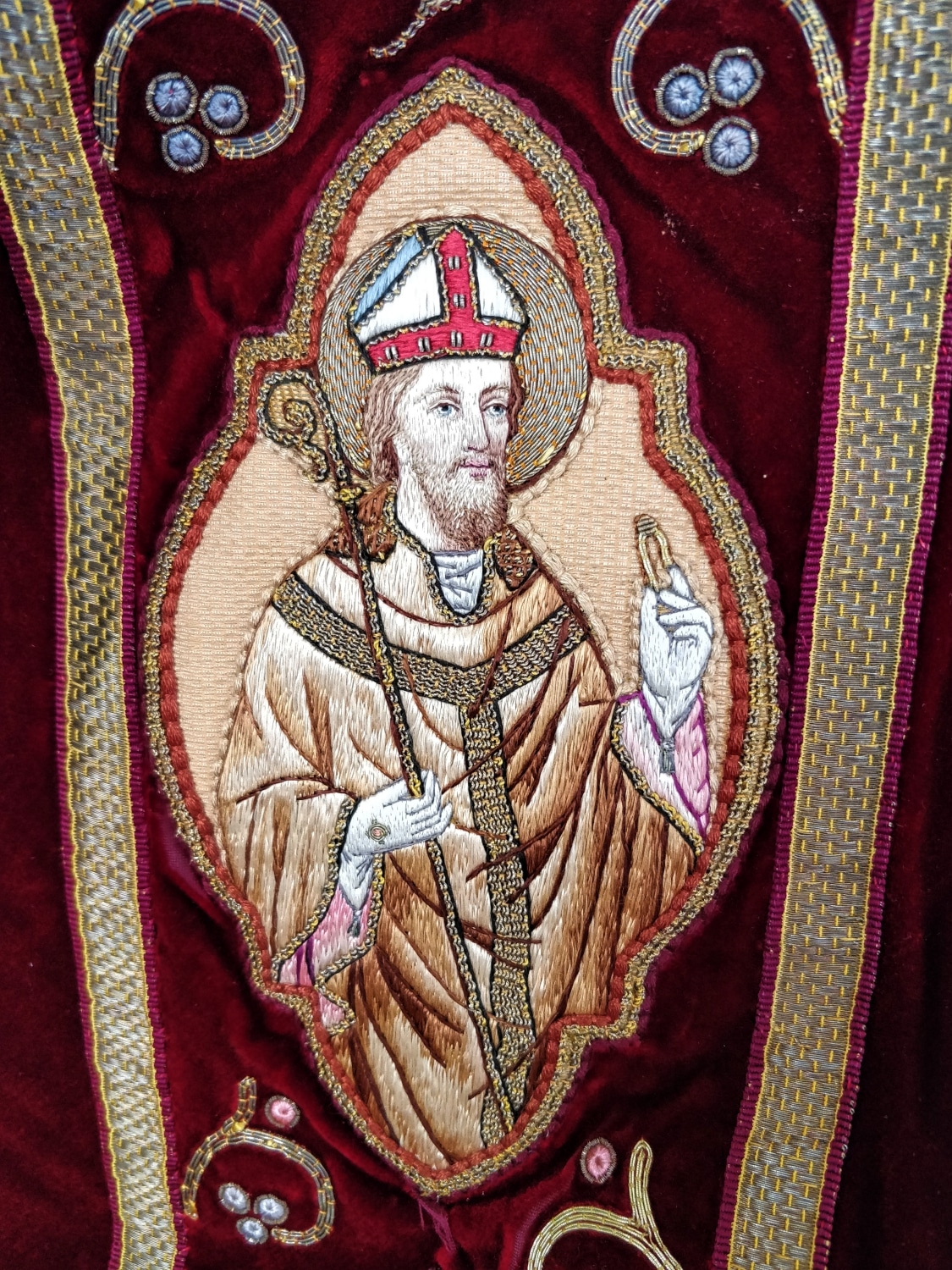
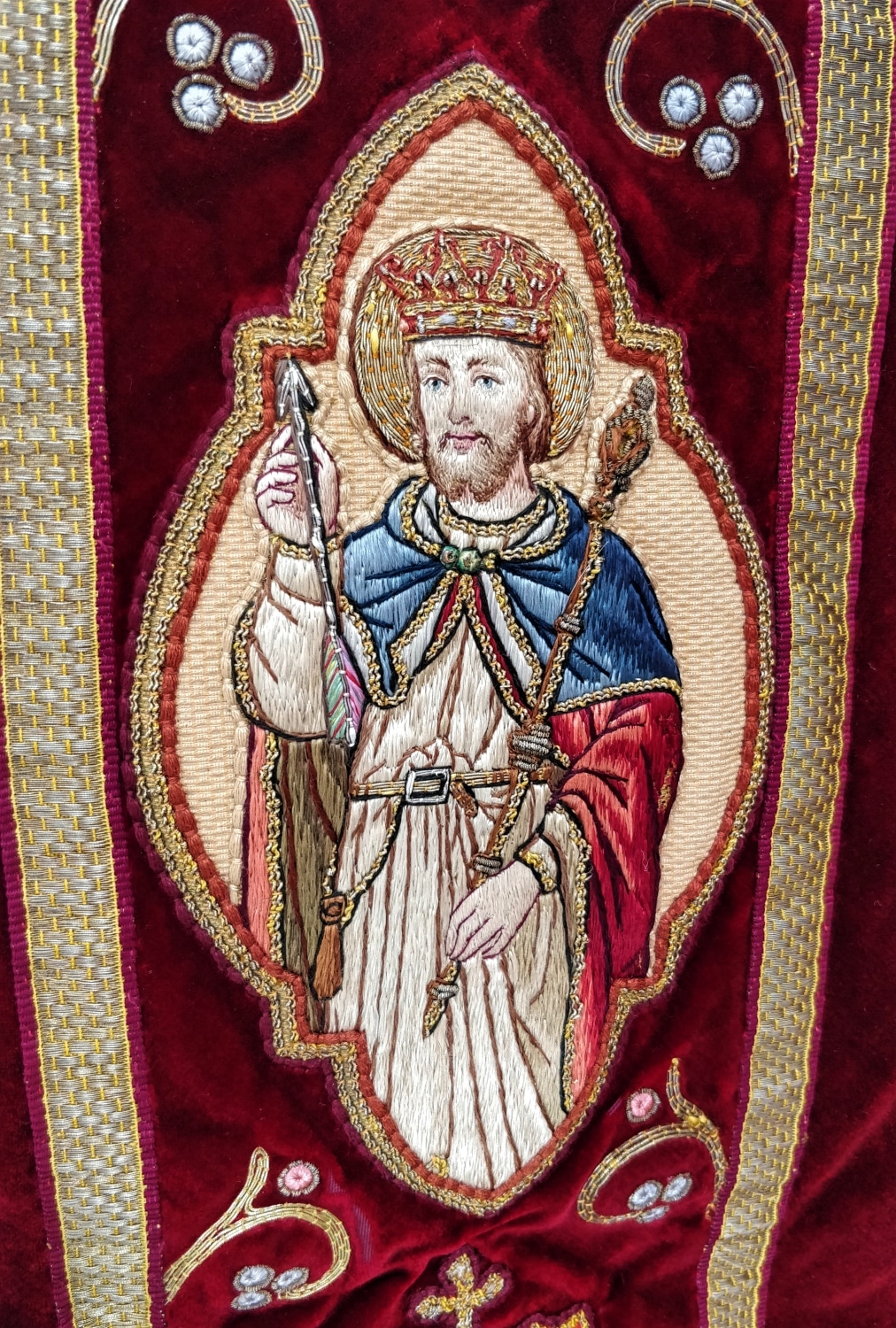
Underneath, on the trunk of the orphrey, come Bl Hugh Faringdon alias Cooke, the martyred last abbot of Reading, and then Bl Thomas Marshall alias Beche, martyred last abbot of Colchester, each with his mitred armorial shields.
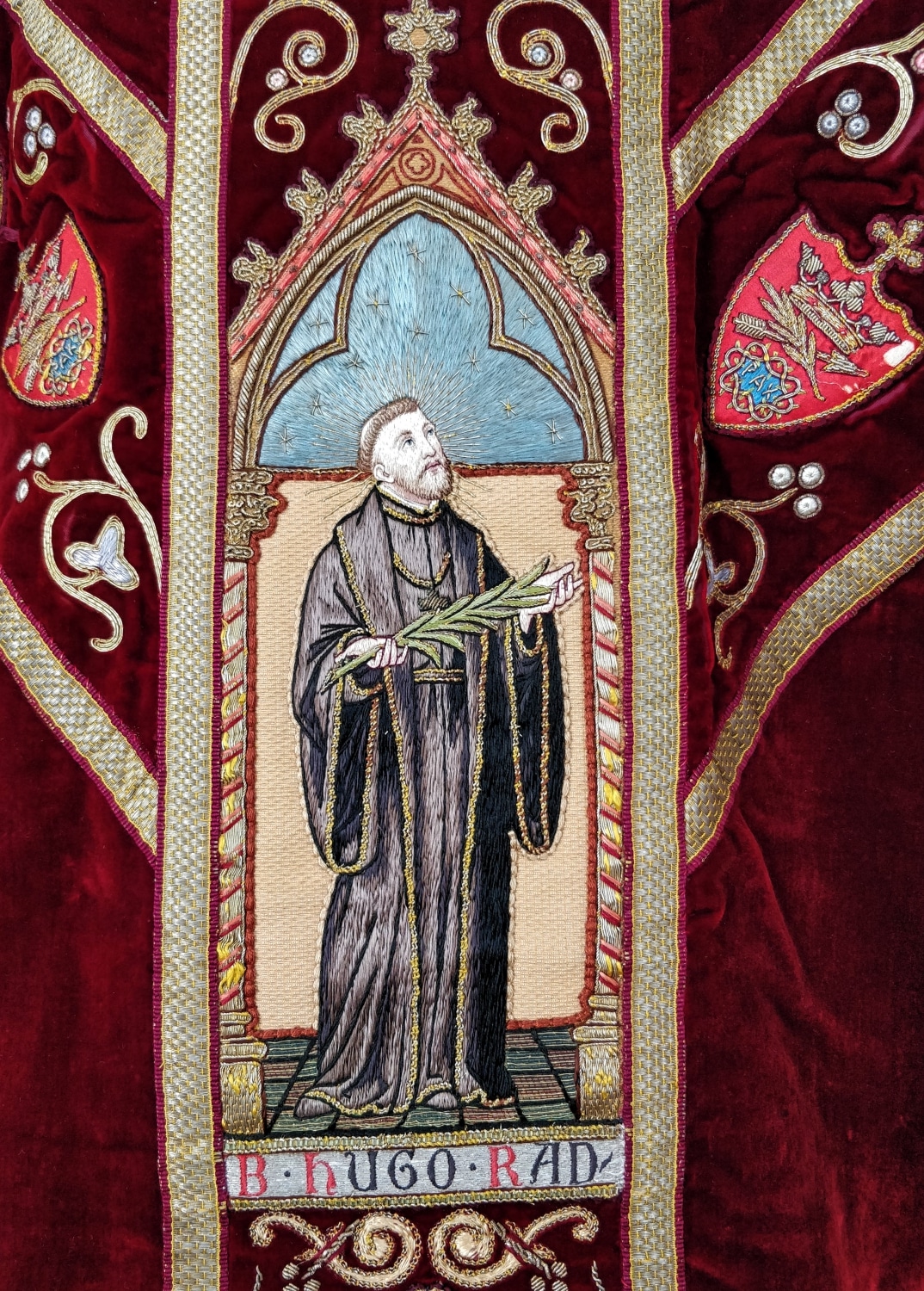

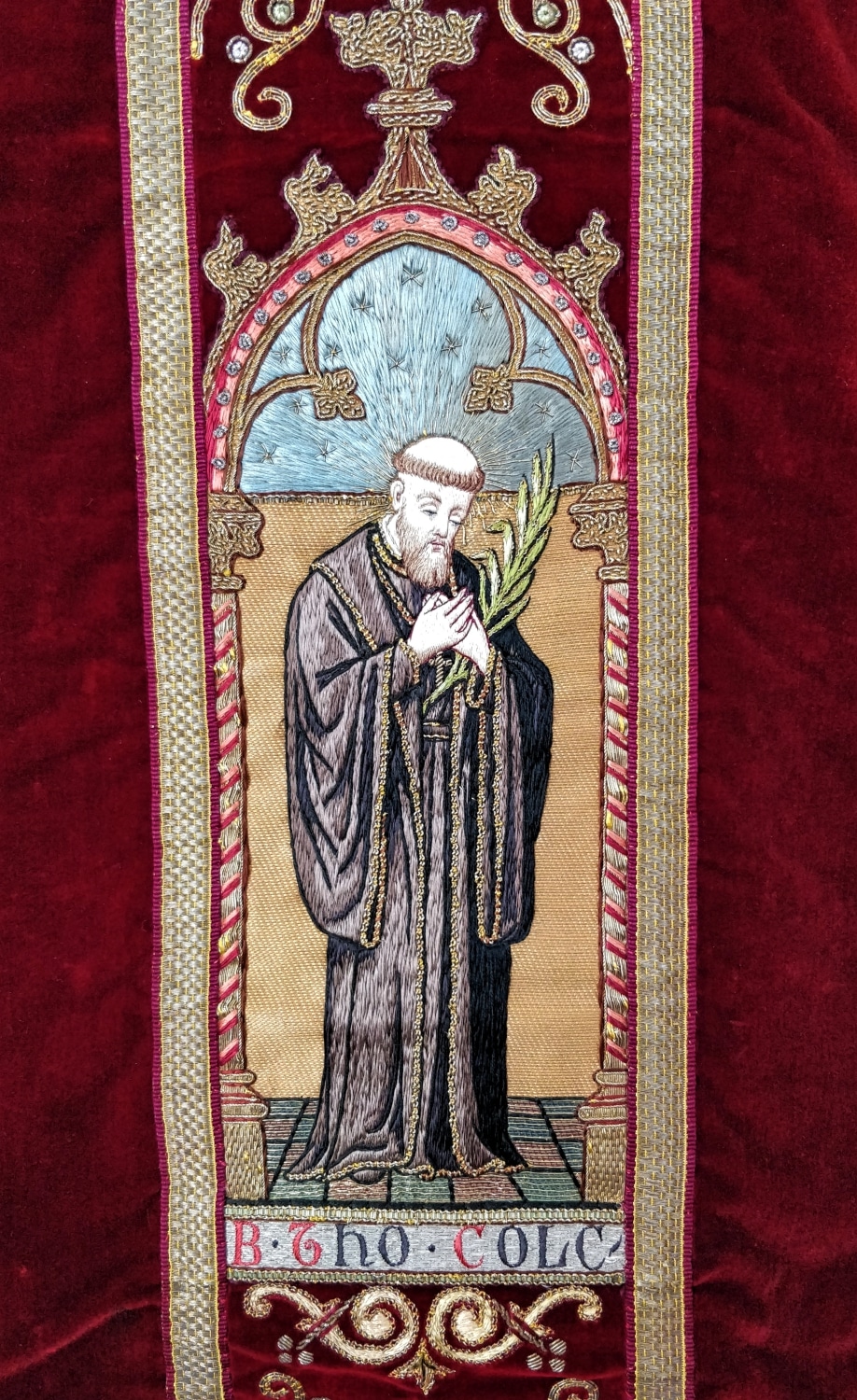

On the back of the chasuble, occupying the arms of the orphrey, are the pillars of the Church of Rome, Sts Peter and Paul, and beneath them on the trunk are our Holy Father St Benedict and Bl Richard Whiting, martyred last abbot of Glastonbury, the latter again with mitred armorial shield.
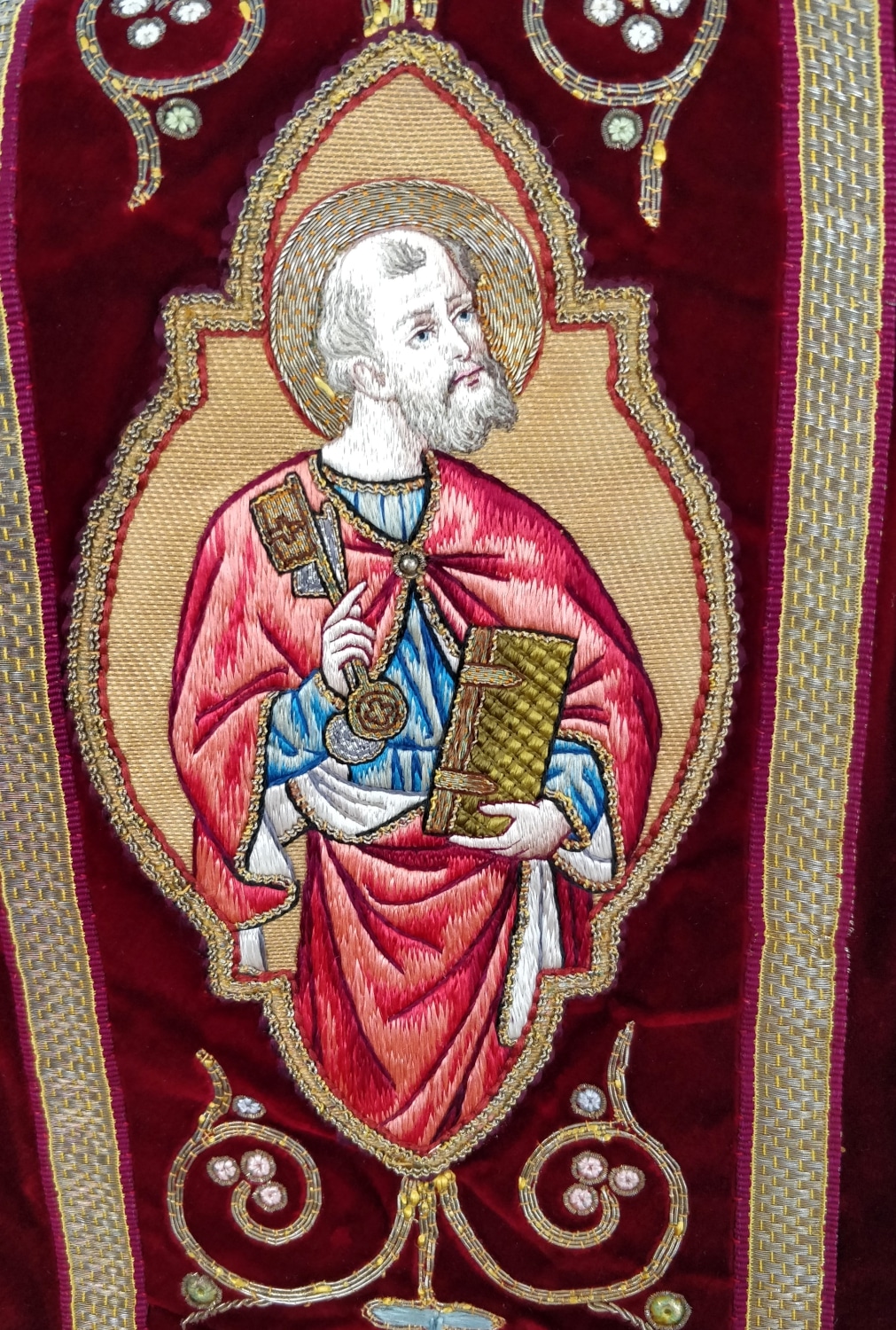
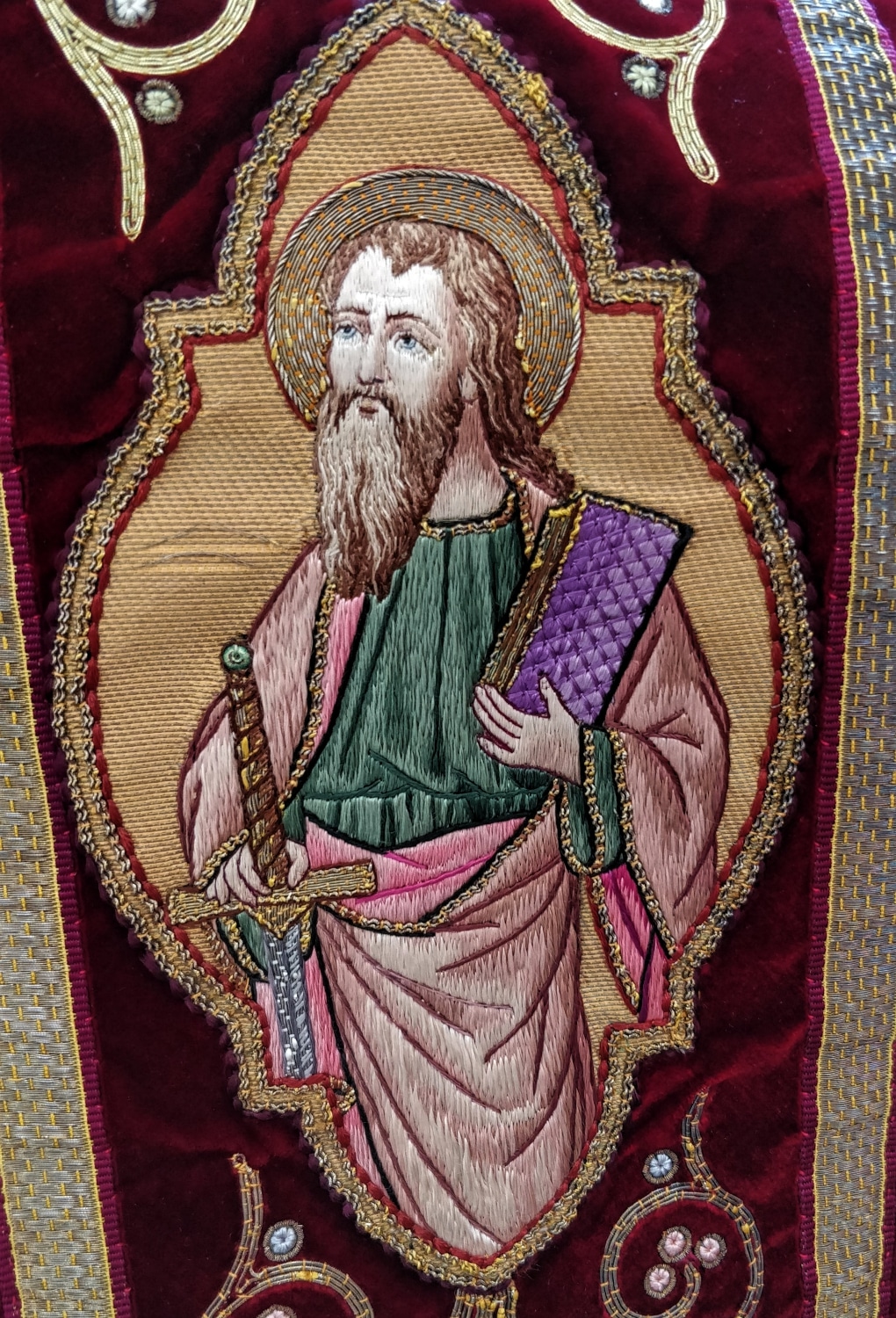



The collar hosts a charming series of alternating crowns and tongues of fire, denoting the two feasts for which the vestment is used.

Either side of St Benedict, on the arms of the orphrey below the apostles, are two images relating to episodes in the Dialogues of St Gregory the Great about St Benedict.


On the upper panel of the orphrey trunk is the Holy Spirit descending as a dove.
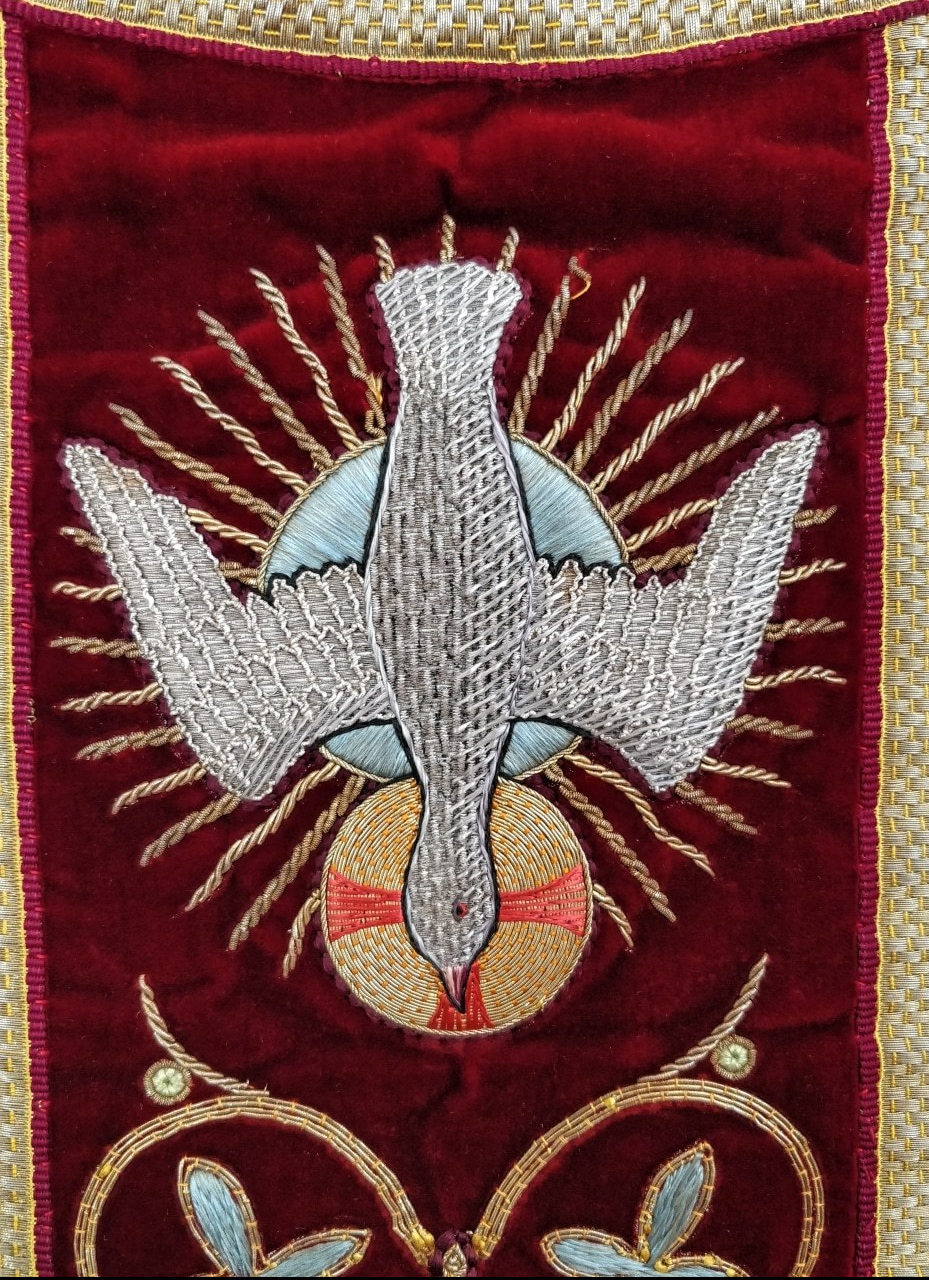
In various places the old armorial shield of the monastery is reproduced, with the crown of St Edmund, the arrow and palm branch of his martyrdom and the EBC’s emblem, pax inter spina, all on a blood-red background.

The stole, as also the deacon’s, bear the chi-rho and tongues of flame.

If this series has not so far proved too arcane, it will continue with dalmatic and cope and some other pieces that may be of interest.
Pax!
so beautiful
Oh yes, please continue!
Very very beautiful post!! Thank you!!